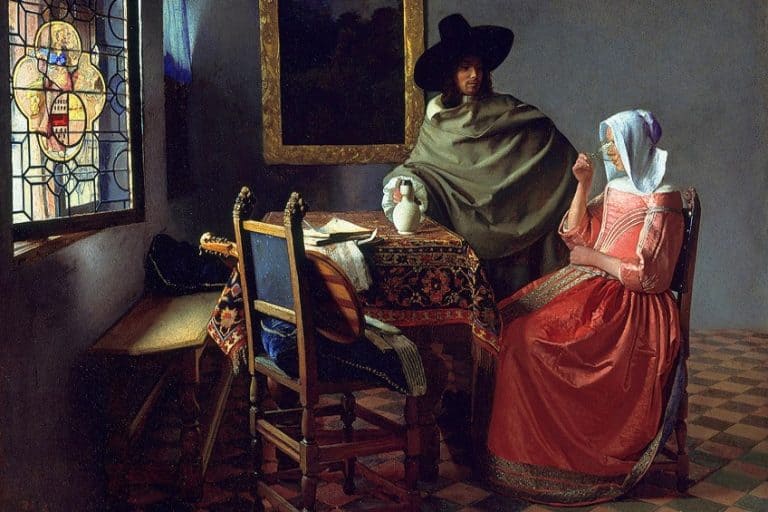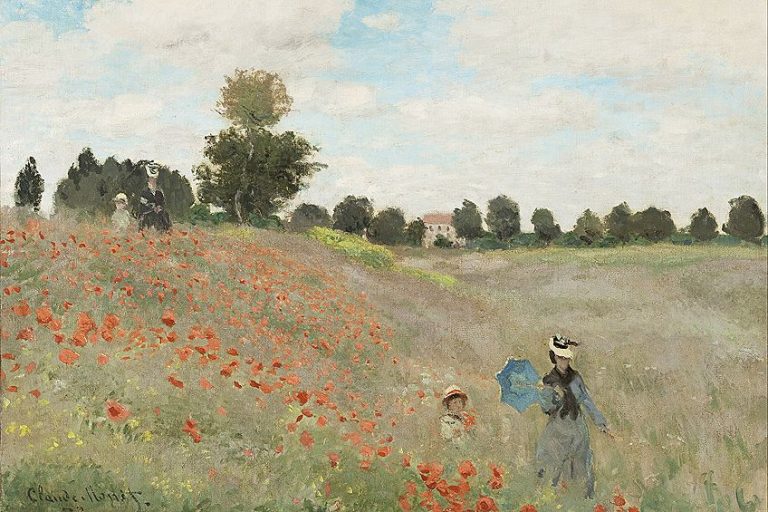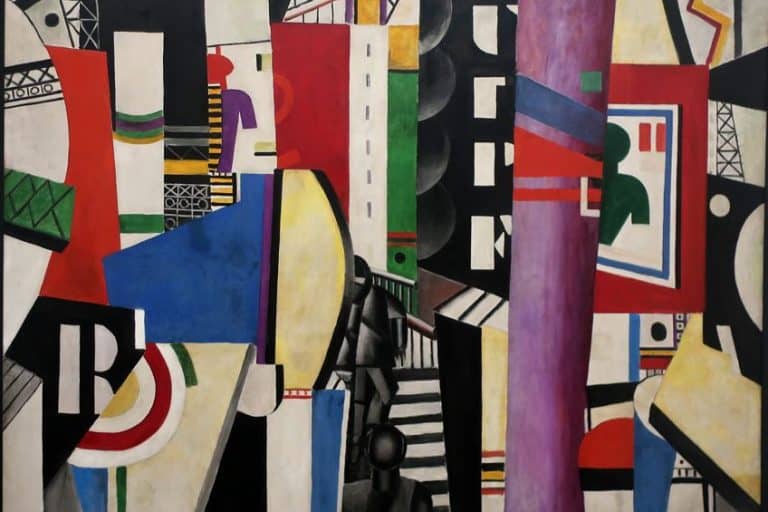“Necronom IV” by H.R. Giger – A Detailed Analysis
Aliens. Dark spaces. Womb-like crevices and creatures that seemingly stepped out of the stuff of nightmares. These, and more, make up the artistic oeuvre of Swiss artist Hans Ruedi (H.R.) Giger. This article will discuss Necronom IV (1976), one of his many fantastical creatures brought to life.
Artist Abstract: Who Was Hans Ruedi (H.R.) Giger?
Hans Ruedi Giger was born in the Swiss city of Chur in Switzerland on February 5, 1940, and he died due to a fall on May 12, 2014, in Zürich where he lived. He was known as a Fantastic Realist artist and became renowned for the artworks and concepts portrayed in the movie Alien (1979) by Ridley Scott, for which he received an Oscar for Best Achievement in Visual Effects in 1980.
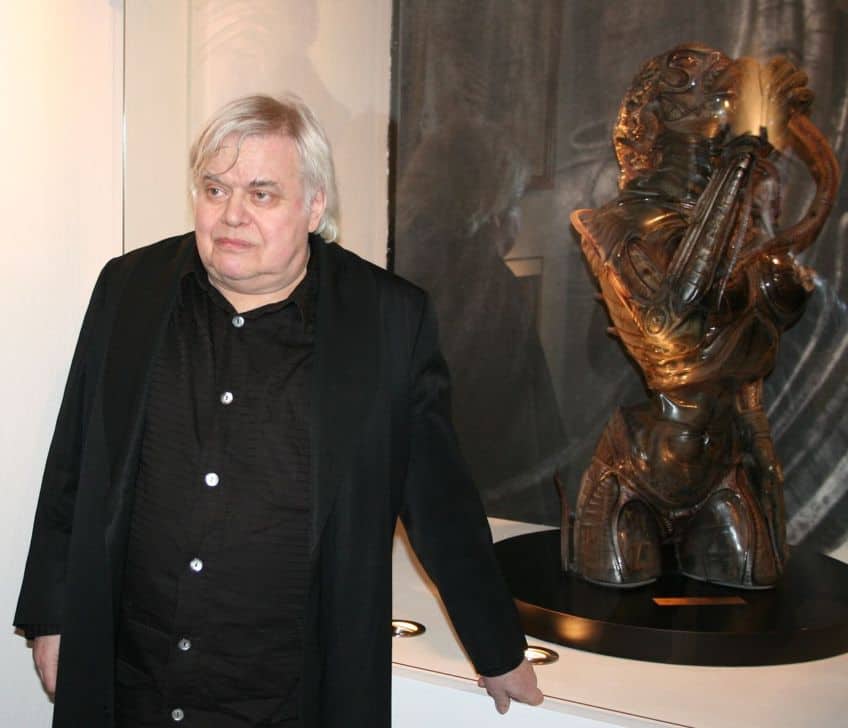
He studied at the School of Applied Arts in Zürich, notably at the Department of Interior and Industrial Design, and worked in a variety of media, including drawing, painting, and sculpture. He also published several books, notably his influential Necronomicon (1977).
Necronom IV (1976) by Hans Ruedi Giger in Context
The article below will explore Necronom IV by H.R. Giger in more detail, looking at what inspired the artist to create it and how it inspired other artists, becoming one of the leading science fiction imageries of the 20th century. This will include a discussion of visual composition and how the elements of art compose it.
| Artist | Hans Ruedi Giger |
| Date Painted | 1976 |
| Medium | Acrylic on paper and wood |
| Genre | Genre |
| Period/Movement | Fantastic, Science Fiction, and Biomechanical art |
| Dimensions (cm) | 150 x 100 |
| Series/Versions | N/A |
| Where Is It Housed? | H.R. Giger Museum, Gruyѐres, Switzerland |
| What It Is Worth | N/A |
Contextual Analysis: A Brief Socio-Historical Overview
H.R. Giger was a talented artist with an undoubted depth of spirit and imagination. His artworks are visual outer testimonies of the inner realms of his subconscious and his interests stretched far and wide, from Egyptian motifs, and occultism to the beauty of women. To understand his Necronom IV painting, one example of many requires a look at what inspired this Swiss artist.
Reportedly, he was influenced by his books and dreams. For example, the psycho-analytical theories and applications of figures like Sigmund Freud and Carl Gustav Jung helped Giger interpret his dreams, which were significant influences on his subject matter; he reportedly experienced nightmares or “night terrors”.
Additionally, he reportedly remembered when he was born, which was a traumatic process for him and involved his removal from his mother’s womb with forceps. He also described the above memory as being an enclosed space evoking claustrophobia in him.
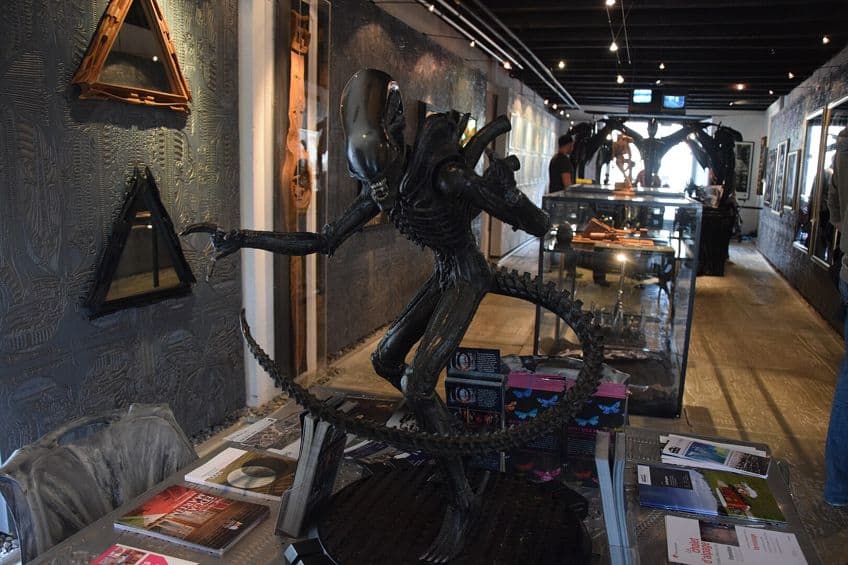
He was also influenced by his childhood memories, a memory often referred to, of visiting an Egyptian mummy at the Rӓtisches Museum in Chur, which his sister took him to when he was around six years old. Reportedly he visited this mummy every week and imagined that it was a princess.
Along with various other difficult and traumatic memories, Giger recalled the collective fears of his family while growing up during World War II and how his parents would prepare for possible bombings. Some of the prolific writers who influenced Giger included the American horror and fantasy writer H.P. Lovecraft, crime fiction writers like the British Edgar Wallace, and the Irish Samuel Beckett.
Formal Analysis: A Brief Compositional Overview
The formal analysis below will discuss a visual description of the Necronom IV by H.R. Giger and how the art elements compose this harrowing and unearthly figure.
Subject Matter: Visual Description
The Necronom IV by H.R. Giger depicts the alien figure standing in a profile position (seen from the side) and centrally placed in the composition. Only its upper torso, up to its waistline, is visible, and its lower torso and legs are not in our, the viewers, sight. It has a thin emaciated physique revealing around ten ribs. It is a combination of the skeleton, skin, muscle, and almost machine, all of which becomes a “biomechanical” creature, which is a term often attributed to Giger’s art.
It has a prominent backward lean and appears somewhat stable in this position, and seemingly balanced out and held in place by a thick handful-sized tubular shape (we will call this a tube from here on) erecting from its front lower belly area. It creates a convex-like curve up to the top of its head, ending in a bulbous transparent shape, revealing a small skeletal entity inside it, as if it is in a womb.
The alien is slightly touching the top part of the tube with its right hand, which is parallel to its forehead.
More specifically, its four right fingers are propped against the outer side of the tube while its thumb is positioned on the inner side of the tube facing its forehead and eyes. The curve created from this hand position, from the outside of its right thumbnail to its wrist area, echoes the curve of its forehead. Its right arm is bent at an angle as its hand props up this tube structure. Its left arm is extended outward in the top right corner of the composition as if reaching towards something (its inner forearm is almost directly on the other side of the tube where its right hand’s four fingers are positioned). Its palm is also open and facing outwards.
Looking at its back, there are three more tube-like structures growing from the upper, middle, and lower spinal areas. The lower two are open at the ends, and almost reminiscent of arteries or veins. There is also what appears to be a skeletal tail growing from its lower spine, consisting of over 20 vertebrae. The three spinal tube-like structures and its tail all appear to be jointly held by a black skin-like webbing between them.
The upper tube-like structure ends in a concave shape at the tip, almost reminiscent of a can-opener shape. This echoes the curved, convex shape of the bulbous structure above it, as if it can almost fit into the shape below it. The bulbous structure above this is the end tip of the alien’s head, and it also has a skeletal creature inside, almost as if this is another type of womb or chamber. The alien’s head is long and horizontal, resembling a phallus shape. Its face appears frightening and garish. It has a large mouth that reveals sharp teeth as if it cannot be closed.
Its eyes, although in this rendition its right eye, are an upright ovular shape and insect-like. Along its neck and cheek area are what appear to be more tube-like or artery/vein-like structures, but these also resemble tendons. The background appears to be a wall with stylized patterns of intertwined vein-like or tendinous cords.
Color
The color in Necronom IV by H.R. Giger is monochromatic, and there is not a significant variety of colors. It is mostly composed of dark grays, black, and beiges that resemble the color of bone revealed through the alien figure’s taught-looking skin.
Giger varied the light and shadowed areas, which provides emphasis on the garishness of the figure.
Texture
The tactile texture of Necronom IV by H.R. Giger appears smooth, but there is implied texture giving the alien its characteristic appearance. For example, its head appears hard, and, in a bone-like texture, its arms appear to have more of a skin-like texture, and the tubular structures appear somewhat soft and bendable.
Shape and Form
As with the variety of lines, there are also natural (or organic) shapes and forms composing Necronom IV by H.R.Giger. For example, notice the concave and convex shapes created by the tube-like structures, the circular forms of the alien’s head including the two small skeletal figures, the cylindrical phallic form of his head, as well as the upright ovular shape of its right eye.
Although the figure appears otherworldly and biomechanical in its form, its hands appear significantly human.
Line
There are a variety of natural (or organic) implied lines delineating the form of the alien figure in Necronom IV by H.R. Giger. These all seemingly interact with each other, creating a dynamic effect. There are curved lines and horizontally oriented lines created by the tube-like structures growing from the alien’s spine. A more angular (or geometric) line is implied by the bend of the alien’s right arm.
Space
The compositional space of the Necronom IV painting is filled by the alien figure in the foreground standing against a background that appears close behind it, bringing it more into our, the viewers’, space. There does not appear to be pictorial depth between the foreground and background.
Giger: The King of Dark Things
H.R. Giger accomplished many things during his life as an artist, he lived until the age of 74. He left a legacy that many are inspired by and still visit today at his Saint-Germain Castle in Gruyѐres in Switzerland. This is also where the H.R. Giger Museum is located and the innovative H.R. Giger Bar, created in the same alien style allows visitors an embodied experience.
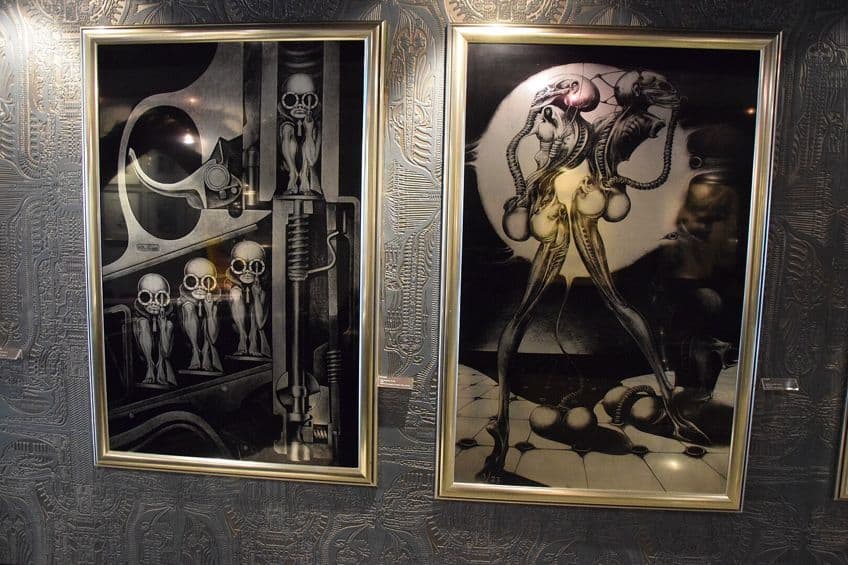
This article explored the painting Necronom IV by H.R. Giger and the accumulation of the artist’s experiences that shaped it. Giger’s life may have seemed turbulent and traumatic, dark and macabre, but this is exactly what informed and molded his dolichocephalic alien and its stardom in the 20th century.
Frequently Asked Questions
What Is the Necronom IV Painting?
The Necronom IV is an acrylic painting by the Swiss artist Hans Ruedi Giger, who was famous for his depictions of alien-like biomechanical figures. It measures 100 by 150 centimeters.
Who Created the Famous Alien Painting?
Hans Ruedi (H.R.) Giger, who was a Swiss artist and designer, created the famous alien creature seen in the film Alien (1979) by Ridley Scott. His painting, Necronom IV (1976), was one of the primary inspirations for the film’s alien creature, alongside his publication Necronomicon (1977).
What Was H.R. Giger’s Art Style?
H.R. Giger’s art style was a combination of fantasy and science fiction, and was described as so-called biomechanical art. He worked with a variety of media throughout his artistic career, namely painting in acrylic and oil, airbrushing, drawing in ink, and sculpture. His subject matter was often macabre, grotesque, and dream-like.
Alicia du Plessis is a multidisciplinary writer. She completed her Bachelor of Arts degree, majoring in Art History and Classical Civilization, as well as two Honors, namely, in Art History and Education and Development, at the University of KwaZulu-Natal, South Africa. For her main Honors project in Art History, she explored perceptions of the San Bushmen’s identity and the concept of the “Other”. She has also looked at the use of photography in art and how it has been used to portray people’s lives.
Alicia’s other areas of interest in Art History include the process of writing about Art History and how to analyze paintings. Some of her favorite art movements include Impressionism and German Expressionism. She is yet to complete her Masters in Art History (she would like to do this abroad in Europe) having given it some time to first develop more professional experience with the interest to one day lecture it too.
Alicia has been working for artincontext.com since 2021 as an author and art history expert. She has specialized in painting analysis and is covering most of our painting analysis.
Learn more about Alicia du Plessis and the Art in Context Team.
Cite this Article
Alicia, du Plessis, ““Necronom IV” by H.R. Giger – A Detailed Analysis.” Art in Context. May 19, 2023. URL: https://artincontext.org/necronom-iv-by-h-r-giger/
du Plessis, A. (2023, 19 May). “Necronom IV” by H.R. Giger – A Detailed Analysis. Art in Context. https://artincontext.org/necronom-iv-by-h-r-giger/
du Plessis, Alicia. ““Necronom IV” by H.R. Giger – A Detailed Analysis.” Art in Context, May 19, 2023. https://artincontext.org/necronom-iv-by-h-r-giger/.



